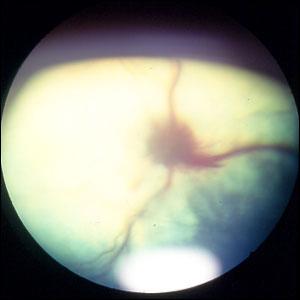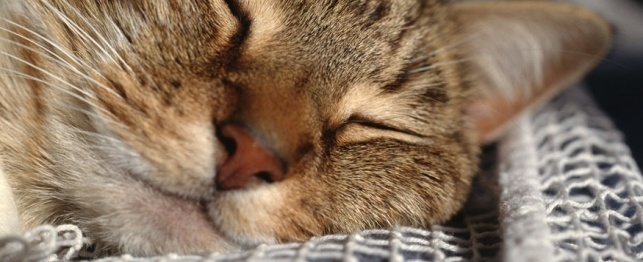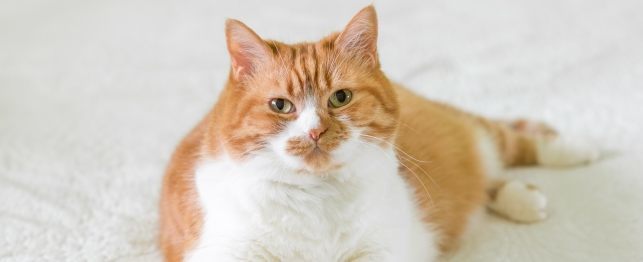Polyphagia (Increased food consumption) in Cats
Cats
Polyphagia (Increased Food Consumption) in Cats
Polyphagia is the term used for an increased consumption of food. Cats with polyphagia are generally described as having a ravenous appetite.
It is important to differentiate polyphagia caused by a diseased state from that caused by psychological reasons. Psychological polyphagia is often the result of learned behaviors and overfeeding, causing weight gain and obesity. In polyphagia associated with disease states, either weight gain or weight loss might be seen.
Causes of Polyphagia in Cats
Psychological or behavioral. Polyphagia can even be associated with aging, as some cats tend to become ravenous with age. Poor gastrointestinal absorption of nutrients may cause some animals to be polyphagic while losing weight. Examples of this include inflammatory bowel disorders, certain intestinal cancers, and pancreatic exocrine insufficiency. Hyperadrenocorticism (Cushing's syndrome) is an uncommon cause of polyphagia in the cat. It is generally also associated with an increase in thirst and urinations. Hyperthyroidism is caused by an unregulated overproduction of thyroid hormone by the thyroid glands, which is usually related to a benign enlargement (growth or tumor) of one or both thyroid lobes. Diabetes mellitus may cause polyphagia due to poor utilization of the body's blood sugar. Insulin producing tumors (insulinomas, liver tumors) may cause a lowering of the blood sugar and a corresponding increase in appetite. Some drugs may induce an increased appetite (prednisone and phenobarbital). What to Watch For
Long-term polyphagia can have a profound affect on your cat. Look for these signs:
Increased appetite associated with weight gain or loss. Weight gain occurs with psychological or behavioral polyphagia. Weight loss may occur with poor gastrointestinal absorption or insulin producing tumors. Weight loss or gain may be associated with diabetes and hyperadrenocorticism. A change in behavior. Your pet may become fixated on food. A change in body conformation. You may notice fat deposits redistributed around the body, a potbelly and muscle atrophy. Vomiting. Some cats will eat so rapidly that they vomit the food back up immediately after eating. Diagnosis of Polyphagia in Cats
Your veterinarian will take a good medical history and perform a thorough physical examination on your cat. The medical history can be crucial in identifying whether or not polyphagia is behavioral or pathological. Marked weight gain or loss should be noted in the history and physical examination. Your veterinarian may also recommend:
Complete blood count (CBC) to evaluate for anemia, inflammation, or infection and to evaluate the platelet count. Abnormalities on the CBC would suggest pathological rather than behavioral polyphagia. Serum biochemistry tests to evaluate the overall health of your cat and to evaluate the function of vital organs such as the liver and kidneys. These tests are useful for eliminating endocrine disorders such as hyperadrenocorticism and diabetes mellitus. Low blood sugar may be detected in cats with insulin-producing tumors of the pancreas. A serum thyroid hormone (T4) level should be evaluated. The serum T4 (thyroxine) measures the level of circulating thyroid hormone in the bloodstream. This is the test most commonly used to determine whether the thyroid gland is hyperactive. Urinalysis to evaluate kidney function and check for infection or excessive protein loss in the urine. The urinalysis also is a good screening test for the presence of diabetes mellitus as sugar is found in the urine of diabetic cats.
Based on these initial test results, additional diagnostic tests in cats may include:
Screening tests for hyperadrenocorticism (Cushing's disease) including low dose dexamethasone suppression test, adrenocorticotropic hormone response test, and urine cortisol-to-creatinine ratio. X-rays of the thorax and abdomen Trypsin-like immunoreactivity, a serologic test for the enzyme trypsin. An extremely low concentration of trypsin is compatible with a diagnosis of pancreatic exocrine insufficiency. Endoscopy, a procedure in which a flexible fiberoptic endoscope is passed through the mouth and into the stomach and small intestine while the patient is under anesthesia. Biopsies of the stomach and duodenum (first portion of the small intestine) can be obtained during endoscopy. Treatment of Polyphagia in Cats
Your veterinarian will devise a treatment plan based on the underlying cause of the polyphagia in your cat.
Measures to control food intake can be devised if polyphagia is behavioral in nature. Close regulation of food intake, provision of a higher fiber diet and division of the daily food allotment into several small feedings per day may help in appetite control. Gastrointestinal conditions such as exocrine pancreatic insufficiency may respond to dietary changes and oral medications. Diabetes mellitus often requires daily insulin injections. Hyperthyroidism can be treated with medication (Tapazole® (methimazole), Radioactive iodine therapy, diet, or surgery. Hyperadrenocorticism (Cushing's disease) may be controlled by medication such as o,p-DDD Home Care
Feed an appropriate quantity of good quality cat food. Your veterinarian can help you pick a good type of food and determine the appropriate amount to feed. Avoid feeding table scraps and do not reward begging with treats as this behavior encourages behavioral polyphagia.
If pathological polyphagia is present, it should respond to appropriate treatment of the underlying disease process. If polyphagia fails to improve or worsens during treatment, you should schedule re-evaluation of your cat with your veterinarian.

 Optic Neuritis in Cats
Optic Neuritis in Cats
Optic Neuritis in Cats
Optic Neuritis in Cats
 Patience, Pet Insurance And Other Secrets Of Moving Your Cats In With Other Cats
In tay rolle coaster economy, a lot of people cannot easily
Patience, Pet Insurance And Other Secrets Of Moving Your Cats In With Other Cats
In tay rolle coaster economy, a lot of people cannot easily
 Top 20 Cat Symptoms That Send Them to the Vet
Top 20 Cat Symptoms That Send Them to the Vet
Top 20 Cat Symptoms That Send Them to the Vet
Top 20 Cat Symptoms That Send Them to the Vet
 Obesity in Cats
Obesity in Cats
Obesity in Cats
Obesity in Cats
 Benadryl For Cats
Benadryl For Cats Benadryl (active ingredient diphenhydramin
Benadryl For Cats
Benadryl For Cats Benadryl (active ingredient diphenhydramin